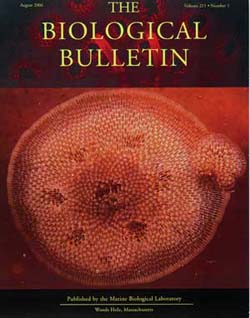Michaelangelo von Dassow

I am interested in feedback between the way structures function and the way they grow, in particular in biological systems that transport fluids. Fluid transport systems are diverse in both morphology and function, including circulatory systems and suspension feeding structures among others, but they are governed by common physical principles. I am interested in three basic questions about feedback control of growth in fluid transport systems. Do similar aspects of fluid flow affect growth in different types of fluid transport systems? How does feedback between fluid flow and growth affect the morphology and performance of the system? And how does feedback between fluid flow and growth affect the response of the system to environmental changes or to injury?
The bryozoan, Membranipora membranacea is a good system for addressing these questions because it has a simple geometry and it is amenable to experimental manipulation. Colonies of M. membranacea are composed of sheet-like arrays of individuals (zooids). Most of the zooids bear ciliated tentacles so that there is a nearly continuous canopy of tentacles over the colony. The ciliated tentacles pump water from which they capture food particles. The water flows from above the colony, between the tentacles, and then under the canopy to exit at openings called chimneys thereby forming a simple fluid transport system. I hope to determine how different aspects of the fluid flow through this system affect its morphology, and how these interactions between fluid flow and morphology affect its responses to injury and to changes in ambient flow rate.
Publications
- von Dassow, M. (2005) Effects of ambient flow and injury on the morphology of a fluid transport system in a bryozoan. Biol. Bull. 208: 47-59
- von Dassow, M. (2005) Flow and conduit formation in the external fluid-transport system of a suspension feeder. J. Exp. Biol. 208: 2931-2938
- von Dassow, M. (2006) Function-dependent development in a colonial animal. Biol. Bull. 211: 76-82
